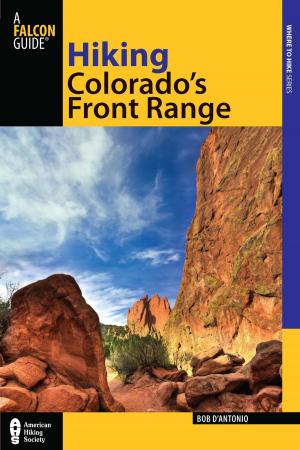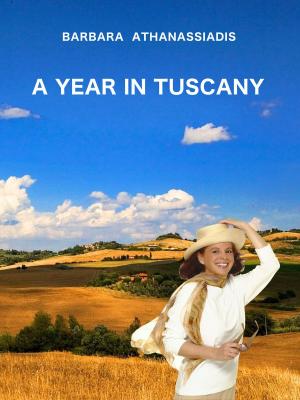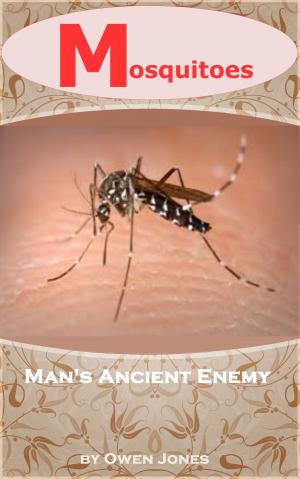Galapagos Landscapes: Scenic Photographs from Ecuador’s Galapagos Archipelago, the Encantadas or Enchanted Isles, with words of Herman Melville, Charles Darwin, and HMS Beagle Captain Robert FitzRoy
Nonfiction, Travel| Author: | Lynn Michelsohn | ISBN: | 9781310940347 |
| Publisher: | Lynn Michelsohn | Publication: | February 10, 2015 |
| Imprint: | Smashwords Edition | Language: | English |
| Author: | Lynn Michelsohn |
| ISBN: | 9781310940347 |
| Publisher: | Lynn Michelsohn |
| Publication: | February 10, 2015 |
| Imprint: | Smashwords Edition |
| Language: | English |
Enter the unique world of the Galapagos Islands!
Glimpse these exotic islands through the eyes of a modern-day nature photographer and in brief selections from the writings of world-famous early visitors.
Nearly 200 years ago, British naturalist Charles Darwin, American novelist Herman Melville, and HMS Beagle Captain Robert FitzRoy of the Royal Navy all traveled to Ecuador's famous archipelago, the Galapagos Islands. Each marveled at the unique and diverse landscapes he found there.
Now, nature photographer Moses Michelsohn captures the same visions of these exotic Galapagos Island vistas in 20 striking color photographs.
Discover . . . "a ceaseless sea" lashing "a fury of foam" . . . volcanic landscapes, rock-bound and stark . . . thickets of "distorted cactus trees" . . . the hiss of "outlandish" iguanas . . . all visions of the “bewitched” Enchanted Isles.
Galapagos Landscapes (5,000 words, 25 illustrations, 40 pages in paperback) includes:
~ Selections from Charles Darwin’s Diary and The Voyage of the Beagle describing his initial impressions of the structure and climate of the Galapagos Islands.
~ Captain Robert FitzRoy’s brief comments on the geography of the Galapagos Archipelago.
~ "Sketch First. The Isles at Large," the first of Herman Melville's ten magazine sketches, in which he explores the landscape of this volcanic archipelago.
~ Moses Michelsohn's striking color photographs (b&w on some e-readers) illustrating their writings.
~ Lynn Michelsohn's brief but informative introductions to the selections.
~ a Bonus Section of Moses Michelsohn's scenic Galapagos Island landscape and seascape photographs.
We hope you enjoy your visit to the Galapagos Islands!
Famous Early Visitors to the Galapagos Islands:
Charles Darwin, a young British gentleman naturalist on his way to becoming a rural parson, won the post of naturalist on the round-the-world survey voyage of HMS Beagle that sailed from Plymouth, England in December 1831. It wasn't until 1859 that he published his theory of Evolution by Natural Selection inspired by the diversity of plants and animals he saw on the voyage of the Beagle, especially on the various Galapagos Islands.
Herman Melville first glimpsed the Galapagos Islands as a young seaman on the whaler Acushnet out of New Bedford, Massachusetts. Years later, after the failure of his novel Moby-Dick, he tried to regain his lost popularity by writing a series ten of magazine sketches, later published as The Encantadas or The Enchanted Isles, recalling this visit to the Galapagos Islands.
Captain Robert FitzRoy, a career officer in the Royal Navy, selected young Charles Darwin to accompany him on HMS Beagle both because of his desire to broaden the scientific scope of his primary mission to map the coast of South America, and because of his desire for appropriate companionship during the five year voyage. FitzRoy remained a committed Creationist throughout his life, strongly opposed to Darwin's Theory of Evolution.
Enter the unique world of the Galapagos Islands!
Glimpse these exotic islands through the eyes of a modern-day nature photographer and in brief selections from the writings of world-famous early visitors.
Nearly 200 years ago, British naturalist Charles Darwin, American novelist Herman Melville, and HMS Beagle Captain Robert FitzRoy of the Royal Navy all traveled to Ecuador's famous archipelago, the Galapagos Islands. Each marveled at the unique and diverse landscapes he found there.
Now, nature photographer Moses Michelsohn captures the same visions of these exotic Galapagos Island vistas in 20 striking color photographs.
Discover . . . "a ceaseless sea" lashing "a fury of foam" . . . volcanic landscapes, rock-bound and stark . . . thickets of "distorted cactus trees" . . . the hiss of "outlandish" iguanas . . . all visions of the “bewitched” Enchanted Isles.
Galapagos Landscapes (5,000 words, 25 illustrations, 40 pages in paperback) includes:
~ Selections from Charles Darwin’s Diary and The Voyage of the Beagle describing his initial impressions of the structure and climate of the Galapagos Islands.
~ Captain Robert FitzRoy’s brief comments on the geography of the Galapagos Archipelago.
~ "Sketch First. The Isles at Large," the first of Herman Melville's ten magazine sketches, in which he explores the landscape of this volcanic archipelago.
~ Moses Michelsohn's striking color photographs (b&w on some e-readers) illustrating their writings.
~ Lynn Michelsohn's brief but informative introductions to the selections.
~ a Bonus Section of Moses Michelsohn's scenic Galapagos Island landscape and seascape photographs.
We hope you enjoy your visit to the Galapagos Islands!
Famous Early Visitors to the Galapagos Islands:
Charles Darwin, a young British gentleman naturalist on his way to becoming a rural parson, won the post of naturalist on the round-the-world survey voyage of HMS Beagle that sailed from Plymouth, England in December 1831. It wasn't until 1859 that he published his theory of Evolution by Natural Selection inspired by the diversity of plants and animals he saw on the voyage of the Beagle, especially on the various Galapagos Islands.
Herman Melville first glimpsed the Galapagos Islands as a young seaman on the whaler Acushnet out of New Bedford, Massachusetts. Years later, after the failure of his novel Moby-Dick, he tried to regain his lost popularity by writing a series ten of magazine sketches, later published as The Encantadas or The Enchanted Isles, recalling this visit to the Galapagos Islands.
Captain Robert FitzRoy, a career officer in the Royal Navy, selected young Charles Darwin to accompany him on HMS Beagle both because of his desire to broaden the scientific scope of his primary mission to map the coast of South America, and because of his desire for appropriate companionship during the five year voyage. FitzRoy remained a committed Creationist throughout his life, strongly opposed to Darwin's Theory of Evolution.















